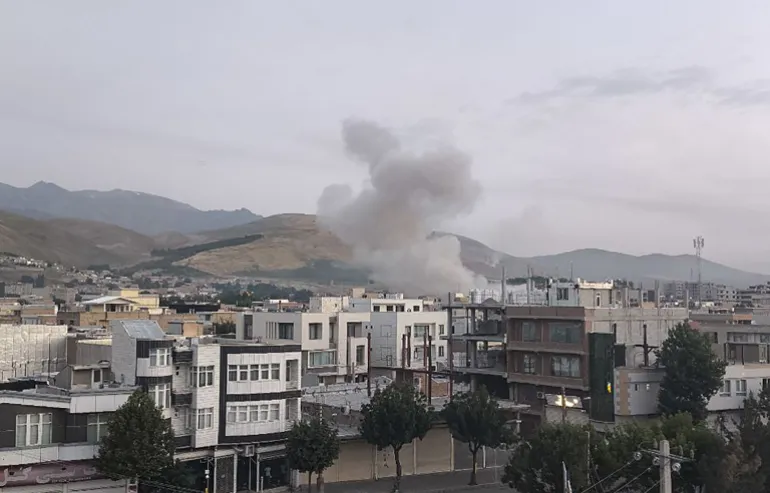- Courses
- GS Full Course 1 Year
- GS Full Course 2 Year
- GS Full Course 3 Year
- GS Full Course Till Selection
- Answer Alpha: Mains 2025 Mentorship
- MEP (Mains Enrichment Programme) Data, Facts
- Essay Target – 150+ Marks
- Online Program
- GS Recorded Course
- Polity
- Geography
- Economy
- Ancient, Medieval and Art & Culture AMAC
- Modern India, Post Independence & World History
- Environment
- Governance
- Science & Technology
- International Relations and Internal Security
- Disaster Management
- Ethics
- Current Affairs
- Indian Society and Social Issue
- NCERT- Science and Technology
- NCERT - Geography
- NCERT - Ancient History
- NCERT- World History
- CSAT
- 5 LAYERED ARJUNA Mentorship
- Public Administration Optional
- ABOUT US
- OUR TOPPERS
- TEST SERIES
- FREE STUDY MATERIAL
- VIDEOS
- CONTACT US
India’s Small Modular Reactor (SMR) Initiative
India’s Small Modular Reactor (SMR) Initiative

India is advancing its plans to enter the Small Modular Reactor (SMR) market, attracting interest from private players for potential deployment at their captive sites.
- This initiative aims to enhance India's position in the nuclear energy sector while supporting its clean energy goals.
What Are Small Modular Reactors (SMRs)?
- Power Output: SMRs typically produce between 30 and 300 MWe (megawatt electric) per unit.
- Versatility: They are designed to provide base load power, complementing renewable energy sources and offering a more carbon-neutral alternative compared to traditional thermal power.
Strategic Importance of SMRs
- Global Context: As countries like Russia and China face challenges in expanding their nuclear operations internationally, India seeks to establish itself as a leader in SMR technology. This aligns with its commitment to a clean energy transition and presents opportunities for international collaboration.
- Domestic Advantages: India has experience operating small reactors, making it well-positioned to develop and manufacture SMRs. This shift to smaller reactors could address energy needs in regions with mid-sized grids or decentralized power systems.
- Government Initiatives: Technical discussions are underway to create a roadmap for SMR deployment, including the potential involvement of the private sector and startups. This push has gained renewed momentum and could receive support from the United States, especially concerning financing and technology dissemination.
Current SMR Projects
Globally, 2 notable SMR projects have reached operational status:
- Akademik Lomonosov (Russia): A floating power unit with two 35 MWe modules that began operations in May 2020.
- HTR-PM (China): A demonstration project that was grid-connected in December 2021 and commenced commercial operations in December 2023.
Russia Targets India for Small Nuclear Power PlantsRosatom State Atomic Energy Corporation, Russia's integrated nuclear power major, is shifting its focus towards selling low-power floating and land-based nuclear power plants globally, including in India. The Akademik Lomonosov, the world’s first floating nuclear power unit, serves as a reference site for this initiative. Key Features of Floating Nuclear Power Plants
Recent Developments
Historical ContextPast Innovations: Small mobile nuclear power plants are not a new concept for Russia; similar designs were developed during the Soviet era. However, recent advancements focus on modernizing these technologies for current energy needs. |
Challenges in the Nuclear Sector
The global nuclear industry is experiencing a downturn, with nuclear power generation reaching its lowest levels in nearly four decades due to:
- Policy Changes: Shifts in national energy strategies and safety concerns post-Fukushima.
- Economic Viability: The competitiveness of renewable energy sources affecting nuclear's market share.
- Declining Production: Countries like the U.S. and France have seen significant reductions in nuclear output, with Germany and Belgium shutting down reactors as part of their energy transition plans.
Advantages of SMRs
- Manufacturing Efficiency: SMRs are designed for factory-based production, which streamlines construction timelines and reduces project costs compared to traditional large reactors.
- Safety and Flexibility: Smaller emergency planning zones and passive safety systems enhance the overall safety of SMRs. They can also be repurposed at sites previously occupied by fossil-fuel power plants.
- Capital Investment: While initial capital investment per reactor may be lower, the cost per MW could be higher compared to larger reactors. However, costs may decrease as more units are constructed.
Conclusion
India’s focus on SMRs represents a significant step towards diversifying its energy portfolio and fostering sustainable development. By embracing this technology, India aims not only to enhance its energy security but also to establish itself as a key player in the global nuclear landscape, responding effectively to both domestic and international energy demands.




